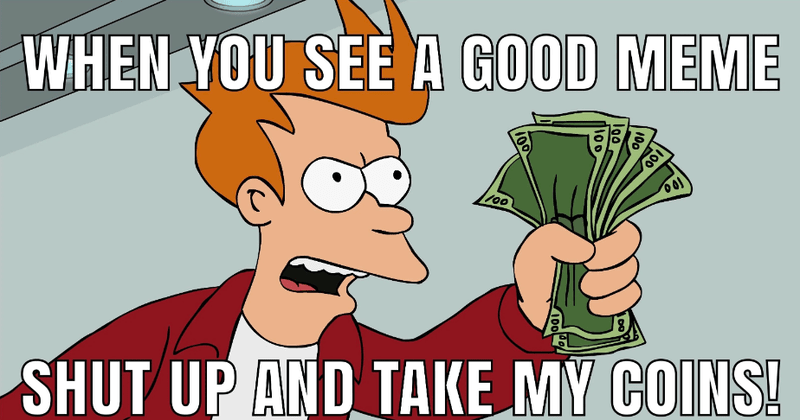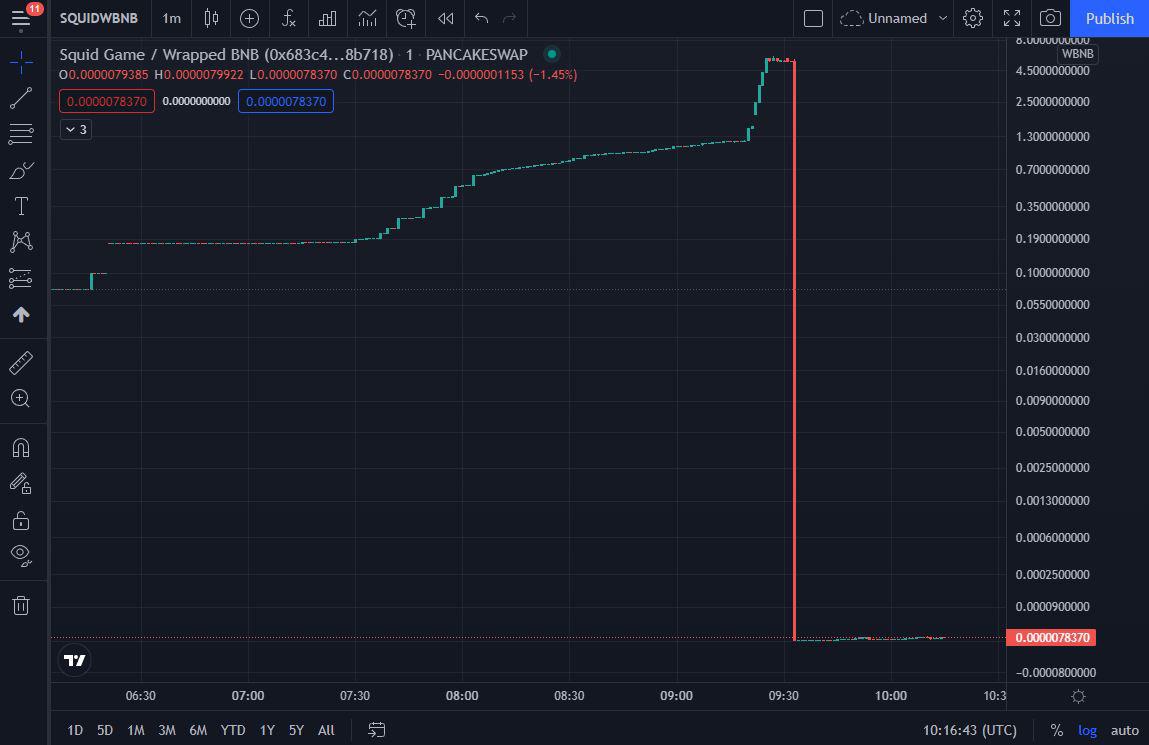What Are Meme Coins and How Do They Work?
- 26 Sep 2024
- Crypto OG's mentioned:

In the cryptocurrency world dominated by Bitcoin and Ethereum, there’s another category of digital currencies that has captured attention: meme coins. What started as internet jokes have quickly gained traction, and some meme coins now boast multi-billion-dollar market capitalizations. But what exactly are meme coins, and how do they work? This article explores the fascinating rise of meme coins, the risks involved, and their potential future.
What Is a Meme Coin?
A meme coin is a cryptocurrency inspired by internet memes or jokes. Unlike traditional cryptocurrencies such as Bitcoin, which were designed for serious financial utility, meme coins often begin with humorous or playful origins. The most well-known example is Dogecoin, created in 2013 by software engineers Billy Markus and Jackson Palmer. Dogecoin was initially designed as a parody of Bitcoin, based on the viral "Doge" meme featuring a Shiba Inu dog.
Since the success of Dogecoin, meme coins have evolved into a phenomenon that blends humor with finance. Coins like Shiba Inu, PepeCoin, and Baby Doge have captured public interest, building passionate communities around their lighthearted branding. While most meme coins lack intrinsic value or utility, their success demonstrates the power of social media and collective sentiment in driving financial trends.
Meme coins also illustrate how cryptocurrency has moved beyond being a niche technology into mainstream culture. From celebrity endorsements to memes-turned-investments, these coins have shown how internet culture can shape financial markets.
The Meme Coin Craze: What Drives Their Popularity?
Meme coins are driven by a mix of community engagement, virality, and accessibility. They often attract younger investors who are active on platforms like Reddit, TikTok, and Twitter. These platforms amplify trends, creating rapid hype cycles that can lead to massive price surges.
FOMO and Accessibility
Meme coins often appeal to FOMO (fear of missing out). Their low price per coin makes them accessible to a broader audience, especially retail investors who may find cryptocurrencies like Bitcoin too expensive. Owning millions of coins for a small investment is not only financially appealing but also emotionally satisfying, creating a sense of belonging within a community.
Social Media Movements
Communities on platforms like WallStreetBets and SatoshiStreetBets have played a significant role in meme coin popularity. Coordinated campaigns to "pump" a coin can lead to viral trends, driving more people to invest. Social media influencers and YouTubers further amplify these trends, bringing even more visibility to meme coins.
Cultural Appeal
The playful and humorous nature of meme coins resonates with internet culture. From Dogecoin's Shiba Inu mascot to PepeCoin’s use of the iconic Pepe the Frog meme, these coins tap into familiar cultural symbols that foster a sense of nostalgia and fun.

Elon Musk and the Dogecoin Phenomenon
Elon Musk, the CEO of Tesla and SpaceX, has been a key player in the rise of meme coins. His tweets about Dogecoin have sparked significant market movements, earning him the nickname "Dogefather." In 2021, Musk’s tweet about Dogecoin being "the people’s crypto" propelled the coin to new heights, with its value surging by over 800% in a matter of weeks.
Musk’s playful tweets about Dogecoin have transformed the cryptocurrency into a cultural phenomenon. For instance, his announcement that Tesla would accept Dogecoin for merchandise sparked renewed interest and pushed the coin’s price upward. Additionally, Musk's influence has encouraged other businesses to adopt Dogecoin as a payment method, showcasing its potential utility.

Characteristics of Meme Coins
Meme coins stand out from traditional cryptocurrencies due to their unique characteristics:
Massive or Unlimited Supply
Many meme coins have an abundant supply. For example, Dogecoin has no supply cap, with over 140 billion coins in circulation. This contrasts with Bitcoin’s fixed supply of 21 million coins, making meme coins inflationary by design.
Community-Centric Value
The value of a meme coin often depends on the strength and enthusiasm of its community. A passionate community can create viral moments that drive up demand and price.
Lack of Initial Utility
Most meme coins start with little or no utility, relying instead on humor and hype. However, some coins, like Shiba Inu, have begun building ecosystems, adding features like decentralized exchanges and token burning to increase their value.
Low Price Per Coin
Meme coins are typically priced very low, making them accessible to investors with minimal capital. This accessibility contributes to their mass appeal.
How Do Meme Coins Gain Value?
Meme coins derive value from a combination of social media trends, community engagement, and speculative investment. Unlike cryptocurrencies with clear use cases, meme coins rely heavily on sentiment and visibility.
For example, Shiba Inu gained significant value after being listed on major exchanges like Binance and Coinbase, making it more accessible to a broader audience. Similarly, Floki Inu launched aggressive marketing campaigns, including partnerships with sports teams and advertisements on public transit systems, to boost its visibility.
Listing on exchanges, celebrity endorsements, and trending hashtags can all contribute to a meme coin’s rise. However, these factors also make meme coins highly volatile and susceptible to rapid price swings.
Risks of Investing in Meme Coins
While the potential for high returns is enticing, investing in meme coins comes with significant risks:
- Extreme Volatility: Meme coins are prone to unpredictable price movements.
- Speculative Nature: They lack intrinsic value or utility.
- Pump-and-Dump Schemes: Vulnerable to manipulation by early investors.
- Rug Pulls: Some meme coins are outright scams, leaving investors with losses.
Be Wary of Scams: Due to their popularity, meme coins are often targets of fraudulent schemes. To protect yourself, learn more by reading Crypto Scams: How to Spot and Avoid Them.

Real-World Utility and Future Potential
Some meme coins are exploring real-world applications. For instance:
- Shiba Inu introduced ShibaSwap, a decentralized exchange for trading and staking, and is developing Shibarium, a Layer-2 blockchain designed to enhance scalability and reduce transaction costs.
- Floki Inu is actively building the Valhalla Metaverse, a play-to-earn blockchain game that allows players to earn rewards by participating in quests and battles.
- Dogecoin, the original meme coin, has seen increasing adoption as a payment method for merchants worldwide, including companies like Tesla, which accepts Dogecoin for merchandise.
- Baby Doge Coin focuses on philanthropic efforts by donating to animal shelters and organizing charity drives, while rewarding holders with transaction fee redistribution.
These established meme coins have built dedicated communities and are striving to create tangible use cases that go beyond their meme-based origins. Their long-term viability and innovation suggest that meme coins may play a more significant role in the broader cryptocurrency landscape than init
These developments suggest that meme coins may transition from speculative investments to projects with tangible utility.
How to Identify Credible Meme Coins
Not all meme coins are created equal. To minimize risks, consider the following:
- Active Development: Look for coins with active GitHub repositories or updates from the development team.
- Clear Roadmap: Projects with well-defined goals (e.g., Shiba Inu’s Shibarium) are more likely to succeed.
- Community Engagement: A passionate and active community is often a good indicator of a coin’s potential.
Comparison of Meme Coins to Traditional Cryptocurrencies
While Bitcoin and Ethereum aim to solve specific problems in the financial system, meme coins take a different approach:
| Feature | Bitcoin/Ethereum | Meme Coins |
|---|---|---|
| Purpose | Financial utility, smart contracts, and decentralized apps | Community-driven, humor-inspired, and meme-based |
| Scarcity | Limited supply (e.g., 21 million BTC for Bitcoin) | Often unlimited supply (e.g., DOGE has no cap) |
| Utility | Payments, smart contracts, decentralized finance (DeFi) | Primarily speculative, though some coins are building ecosystems (e.g., ShibaSwap) |
| Value Drivers | Utility, adoption, scarcity | Community engagement, virality, celebrity endorsements |
| Technological Depth | Advanced blockchain ecosystems with robust development (e.g., Ethereum’s dApps and DeFi capabilities) | Typically minimal technological development; focus is often on branding and marketing |
| Adoption by Institutions | Increasingly adopted by corporations, hedge funds, and payment processors (e.g., Tesla, PayPal) | Rarely adopted institutionally; more popular among retail investors and online communities |
| Price Volatility | High volatility but driven by broader market trends and utility | Extreme volatility; highly influenced by social media trends and speculative hype |
| Developer Support | Active developer communities and open-source contributions (e.g., Bitcoin Core, Ethereum Foundation) | Often minimal development, though some (e.g., Shiba Inu) are evolving with active updates |
| Target Audience | Investors, developers, and institutions seeking long-term value | Retail investors and internet communities seeking short-term gains and entertainment |
| Environmental Impact | Moving toward sustainability (e.g., Ethereum’s shift to Proof of Stake) | Often rely on less energy-efficient Proof of Work (e.g., Dogecoin) |
| Cultural Significance | Known as "digital gold" and "world computer" for their revolutionary impact on finance and technology | Represent the intersection of internet culture, humor, and speculative investing |
This table highlights the different philosophies behind traditional cryptocurrencies and meme coins.
Regulatory Challenges for Meme Coins
As meme coins gain popularity, they attract attention from regulators worldwide. Issues include:
- Volatility and Market Manipulation: Authorities are concerned about pump-and-dump schemes, which are more common in meme coins due to their speculative nature.
- Consumer Protection: Investors in meme coins are often less experienced, making them vulnerable to scams. Regulatory clarity could reduce such risks.
- Global Approach to Regulation: Countries like the U.S. and the EU are exploring frameworks for regulating all cryptocurrencies, including meme coins. This could impact how meme coins are traded and marketed.
The Evolution of Meme Coins
Initially dismissed as jokes, meme coins are evolving into platforms with real utility. As they integrate with DeFi, NFTs, and metaverse projects, they could reshape the broader cryptocurrency market. Their ability to merge humor, community, and innovation ensures they remain relevant in the rapidly changing crypto landscape.
The Future of Meme Coins
The future of meme coins is uncertain. While coins like Dogecoin and Shiba Inu have demonstrated staying power, many meme coins fade once their initial hype dissipates. However, as more projects integrate utilities like DeFi platforms, charitable initiatives, and gaming ecosystems, the line between "joke coins" and serious cryptocurrencies is becoming increasingly blurred.
Meme coins highlight the power of internet culture, community-driven value, and speculative investment. Whether they evolve into serious platforms or remain niche investments, their impact on the crypto world is undeniable.










